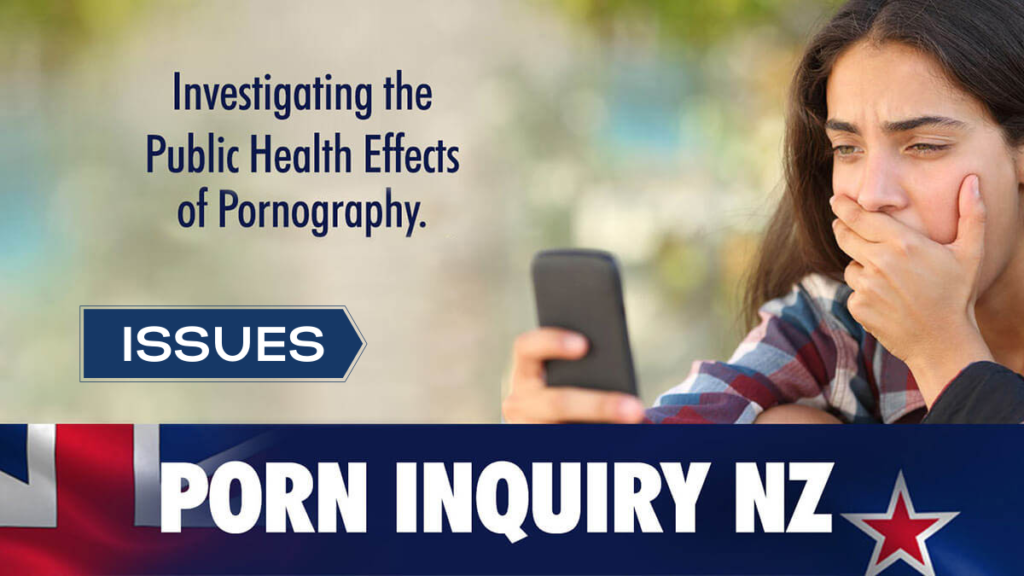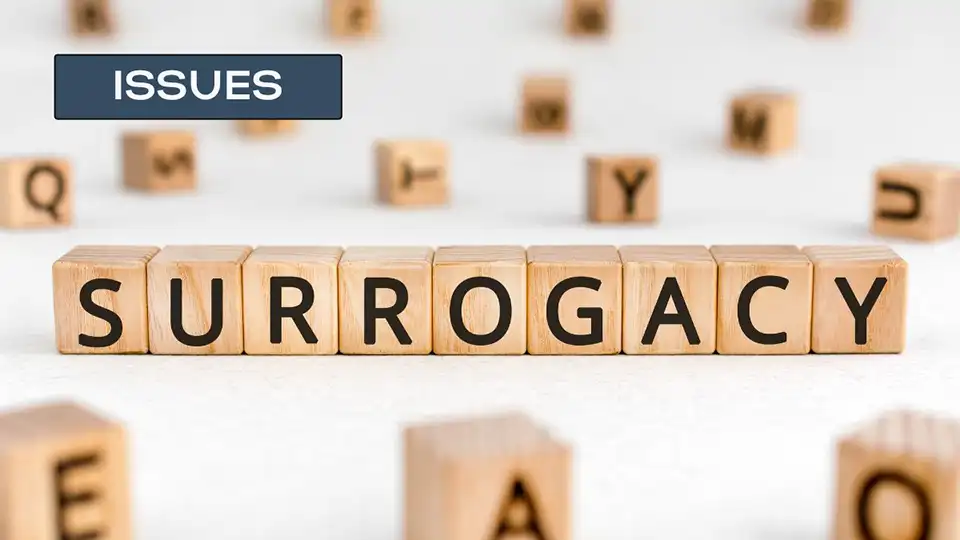March 2021 – Family First NZ is calling on politicians to investigate the public health effects and societal harms of pornography.
The request states: “That an expert panel be appointed to investigate the public health effects and societal harms of pornography to both children and adults, and to make policy recommendations to Parliament.”
“Social scientists, clinical psychologists, biologists and neurologists are now beginning to understand the psychological and biological negative effects of viewing pornography both online and through the media and video games. They show that men who view pornography regularly have a higher tolerance for abnormal sexuality, including rape, sexual aggression, and sexual promiscuity. Prolonged consumption of pornography results in stronger perceptions of women as commodities or as “sex objects,” says Bob McCoskrie, National Director of Family First NZ and sponsor of the petition.
“Pornography has a damaging effect on intimacy, love, and respect and at its worst, leads to sex role stereotyping, viewing persons as sexual objects, and family breakdown. Research has also shown that children who are exposed to pornography develop skewed ideas about sex and sexuality, which lead to negative stereotypes of women, sexual activity at a young age, and increased aggression in boys.”
Read >> Family First’s Submission to the Select Committee
In November 2016, Young New Zealanders Viewing Sexual Violence, the latest research report from the Office of Film and Literature Classification found that teenagers think that inaccurate depictions or misrepresentations of sexual violence in entertainment media are potentially harmful. Harms identified included normalisation, perpetuation of harmful stereotypes, negative impacts on victim/survivors, and being negatively influenced by behaviour seen on screen.
Early last year, the deputy chief censor called for the government to put more options on the table for regulating online pornography, saying “Given New Zealand’s acknowledged problems with sexual and family violence and the demonstrated harm caused by pornography that degrades, dehumanises and demeans people (particularly women), the choice for Government and regulators, must be about how far we are willing to intervene — rather than whether we are prepared to intervene at all.”
Concerns about the health harms of porn are gaining traction around the world. The Canadian parliament has unanimously agreed to investigate the “public health effects” of “violent and degrading sexually explicit material on adults and children” who easily view it on the Internet. Legislators in Israel have approved a bill that would block all porn in Israel unless people ask to view it. In 2016, the Utah House of Representatives became the first legislative body in the United States to pass a resolution declaring pornography “a public health hazard leading to a broad spectrum of individual and public health impacts and societal harms.”
And the Australian Senate has just released a report on the “Harm being done to Australian children through access to pornography on the Internet” with recommendations to do more research on the harms to children, commission an expert panel to recommend policy measures, and examine the adequacy of information available to parents to keep children safe online.
A 2015 report by the American College of Pediatricians (ACOP) titled “The Impact of Pornography on Children” highlights the harms of young people viewing porn and also summarises changes in brain structure and function in those who view pornography and underscores the evidence showing the addictive nature of porn.
Researchers from a number of disciplines have shown that viewing pornography is associated with damaging outcomes. A recent meta-analysis of 22 studies between 1978 and 2014 from seven different countries concluded that pornography consumption is associated with an increased likelihood of committing acts of verbal or physical sexual aggression, regardless of age. A 2010 meta-analysis of several studies found “an overall significant positive association between pornography use and attitudes supporting violence against women.”
In a study of U.S. college men, researchers found that 83% reported seeing mainstream pornography, and that those who did were more likely to say they would commit rape or sexual assault (if they knew they wouldn’t be caught) than men who hadn’t seen porn in the past 12 months. The same study found that porn consumers were less likely to intervene if they observed a sexual assault taking place. In a study of young teens throughout the southeastern United States, 66% of boys reported porn consumption in the past year; this early porn exposure was correlated with perpetration of sexual harassment two years later.
“These studies all highlight the extent to which porn is a public health crisis rather than a private matter,” says Mr McCoskrie.
“A number of hotel chains have also chosen to remove all on-demand pornography from their guest rooms.”
“If we want to tackle sexual violence, we must first admit the role that pornography plays and the harm that it does to attitudes and actions.”
The Background
Social scientists, clinical psychologists, biologists and neurologists are now beginning to understand the psychological and biological negative effects of viewing pornography both online and through the media and video games. They show that men who view pornography regularly have a higher tolerance for abnormal sexuality, including rape, sexual aggression, and sexual promiscuity. Prolonged consumption of pornography results in stronger perceptions of women as commodities or as ‘sex objects’.
Pornography has a damaging effect on intimacy, love, and respect and at its worst, leads to sex role stereotyping, viewing persons as sexual objects, and family breakdown. Research has also shown that children who are exposed to pornography develop skewed ideas about sex and sexuality, which lead to negative stereotypes of women, sexual activity at a young age, and increased aggression in boys.
In November 2016, Young New Zealanders Viewing Sexual Violence, the latest research report from the Office of Film and Literature Classification found that teenagers think that inaccurate depictions or misrepresentations of sexual violence in entertainment media are potentially harmful. Harms identified included normalisation, perpetuation of harmful stereotypes, negative impacts on victim/survivors, and being negatively influenced by behaviour seen on screen.
Early last year, the deputy chief censor called for the government to put more options on the table for regulating online pornography, saying “Given New Zealand’s acknowledged problems with sexual and family violence and the demonstrated harm caused by pornography that degrades, dehumanises and demeans people (particularly women), the choice for Government and regulators, must be about how far we are willing to intervene — rather than whether we are prepared to intervene at all.”
Concerns about the health harms of porn are gaining traction around the world. The Canadian parliament has unanimously agreed to investigate the “public health effects” of “violent and degrading sexually explicit material on adults and children” who easily view it on the Internet. Legislators in Israel have approved a bill that would block all porn in Israel unless people ask to view it. In 2016, the Utah House of Representatives became the first legislative body in the United States to pass a resolution declaring pornography “a public health hazard leading to a broad spectrum of individual and public health impacts and societal harms.” (UPDATE: South Dakota, Arkansas and Virginia have recently passed new measures, joining Utah as states that now view porn as a public health crisis.) Canada has also commissioned a study into the negative impacts of Internet pornography.
A 2015 report by the American College of Pediatricians (ACOP) titled “The Impact of Pornography on Children“ highlights the harms of young people viewing porn and also summarises changes in brain structure and function in those who view pornography and underscores the evidence showing the addictive nature of porn. And the Australian Senate has just released a report on the “Harm being done to Australian children through access to pornography on the Internet” with recommendations to do more research on the harms to children, commission an expert panel to recommend policy measures, and examine adequacy of information available of parents to keep children safe online.
Researchers from a number of disciplines have shown that viewing pornography is associated with damaging outcomes. A recent meta-analysis of 22 studies between 1978 and 2014 from seven different countries concluded that pornography consumption is associated with an increased likelihood of committing acts of verbal or physical sexual aggression, regardless of age. A 2010 meta-analysis of several studies found “an overall significant positive association between pornography use and attitudes supporting violence against women.”
In a study of U.S. college men, researchers found that 83% reported seeing mainstream pornography, and that those who did were more likely to say they would commit rape or sexual assault (if they knew they wouldn’t be caught) than men who hadn’t seen porn in the past 12 months. The same study found that porn consumers were less likely to intervene if they observed a sexual assault taking place. In a study of young teens throughout the southeastern United States, 66% of boys reported porn consumption in the past year; this early porn exposure was correlated with perpetration of sexual harassment two years later.
These studies all highlight the extent to which porn is a public health crisis rather than a private matter.
A number of hotel chains have also chosen to remove all on-demand pornography from their guest rooms.
If we want to tackle sexual violence, we must first investigate the role that pornography plays and the harm that it does to attitudes and actions.





